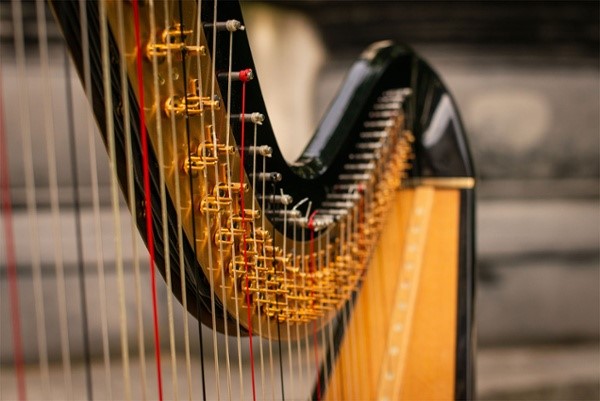
Properties and properties related to the fundamental frequency of quartz crystal microbalances <br> The fundamental frequency f0 of quartz crystal microbalances refers to the lowest frequency at which quartz crystals can be excited to cause oscillation. This particular frequency is related to several key attributes, such as:
- Chip thickness, h
- Theoretical mass sensitivity, C
- Sensing depth, δ
- Harmonic resonance frequency

2. Theoretical mass sensitivity <br> As shown in equation (2), according to the Sauerbrey equation, the mass sensitivity C of the quartz crystal microbalance is inversely proportional to the square of the fundamental frequency. In theory, this means that the higher the fundamental frequency, the better the sensitivity, ie, smaller mass changes can be detected. For example, the theoretical mass sensitivities of the 5 MHz and 10 MHz chips are 17.7 ng/cm 2 and 4.4 ng/cm 2 , respectively, which means that the frequency response of a 10 MHz chip to a given surface quality is four times that of a 5 MHz chip.
From a sensitivity point of view, a high fundamental frequency seems highly desirable. However, in practice, things are not so simple. There are several factors that make high fundamental frequencies not a better choice.
First, as mentioned earlier, the higher the fundamental frequency, the thinner the chip. When the high fundamental frequency to a certain extent, the chip will become very thin and fragile that they can not be used independently 1.
Second, the higher the frequency, the greater the noise during measurement. There are several reasons for this: First, the flatness and thickness defects of the chip cannot be completely avoided during the manufacturing process. The thinner the thickness of the chip, the greater the negative impact on the resonance quality. In addition, the level of noise in the drive and measurement electronics rises with increasing frequency, resulting in measurement uncertainty.
Considering the above, one might think that a thick chip (low fundamental frequency) is ideal. However, things are not that simple. All crystals have defects such as dislocations and impurities. These defects have a negative impact on the quality of the resonance, and the fewer the defects, the better. From this perspective, one would like thin crystals with fewer defects than thicker crystals. Therefore, we usually need to make a comprehensive trade-off on the thickness of the chip.
In summary, the high theoretical sensitivity does not have a direct correlation with better quality detection limits. Factors such as signal-to-noise ratio and long-term stability are more important, which will determine the quality of your measurements.
3. Sensing Depth <br> The third parameter related to the resonant frequency is the sensing depth δ. As shown in equation (3), it is inversely proportional to the square root of the oscillation frequency. The higher the frequency, the thinner the maximum thickness of the film layer detected. For example, at room temperature, shear waves of 5, 10, and 30 MHz crystals penetrate depths of ~250 nm, ~180 nm, and ~100 nm, respectively.
4. Harmonic frequency
The last factor to consider is the resonant harmonics. In order to perform viscoelastic model analysis on QCM data, multiple harmonic frequencies and dissipative information are required. For the conventional QCM, the crystal oscillates in the thickness-shear mode, and only the odd harmonics can be excited, that is, the harmonic frequency is an odd multiple of the fundamental frequency. For example, to get 7 multiple harmonics of a 5 MHz chip, you need to be able to excite crystals up to 65 MHz. The corresponding frequencies for the 10 MHz and 30 MHz crystals are 130 MHz and 390 MHz, respectively, and as mentioned earlier, as the frequency increases, the effects of noise become more pronounced.
The fundamental frequency of QCM is very important
The fundamental frequency of QCM is related to the performance parameters such as chip thickness, theoretical mass sensitivity, and sensing depth harmonic frequency. The most important parameter to focus on is the theoretical mass sensitivity, because the theoretical mass sensitivity increases as the fundamental frequency increases. People instinctively pursue higher fundamental frequencies. However, the effective mass sensitivity, that is, the sensitivity obtained under actual measurement conditions, does not necessarily coincide with the theoretical value. This is because the effective mass sensitivity may decrease significantly with increasing noise and limitations of hardware and electronics, which will affect the quality sensitivity of the chip at the actual test data output.
For more information on the factors related to the quartz crystal microbalance technical parameters and their causes, please download the attached guide.
A Foot Spa Machine with heat is a device used to provide a relaxing and therapeutic foot massage. It usually has a basin filled with warm water and has various massage settings such as vibration, bubbles, and rollers. The heat function helps soothe tired and aching feet, while the massage setting provides a deep-tissue massage that helps improve circulation, reduce tension, and relieve pain. Some foot spas also come with removable attachments, such as pumice stones and brushes, for extra exfoliation and cleansing. Overall, a foot spa machine with heat is a great tool for anyone looking to pamper their feet and promote overall relaxation and wellness.
Foot Spa Machine With Heat,Bubble Foot Bath Massager,Foot Massage Machine,Pedicure Foot Spa Machine
Huaian Mimir Electric Appliance Co., LTD , https://www.mmfootspabath.com